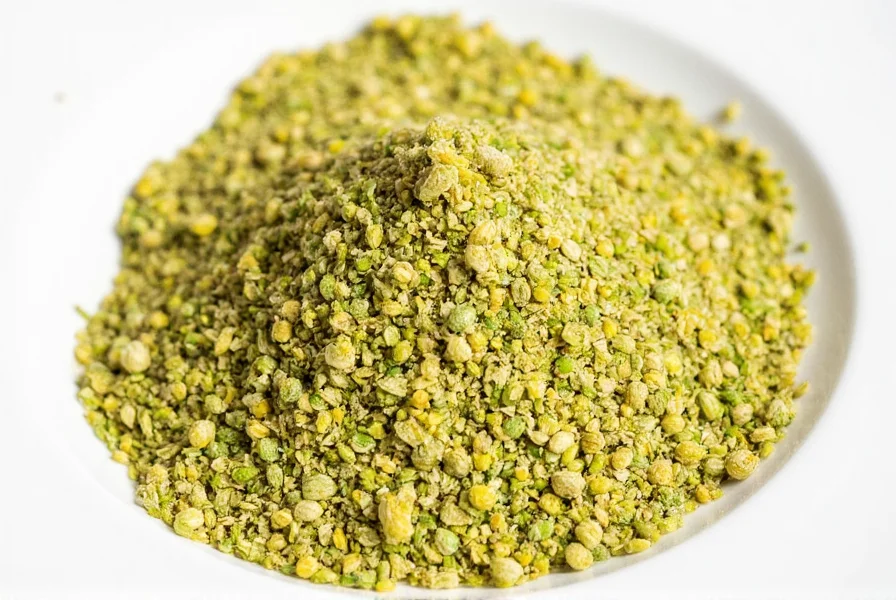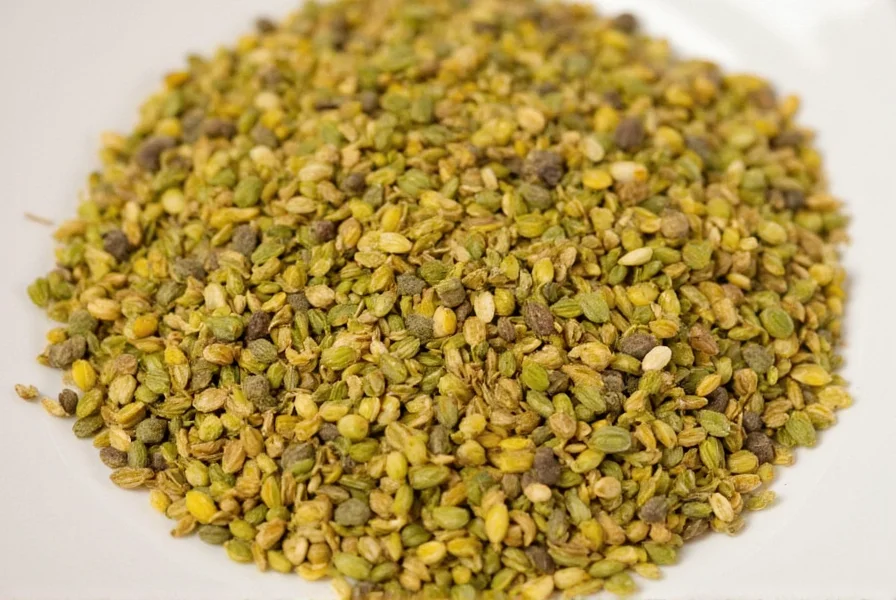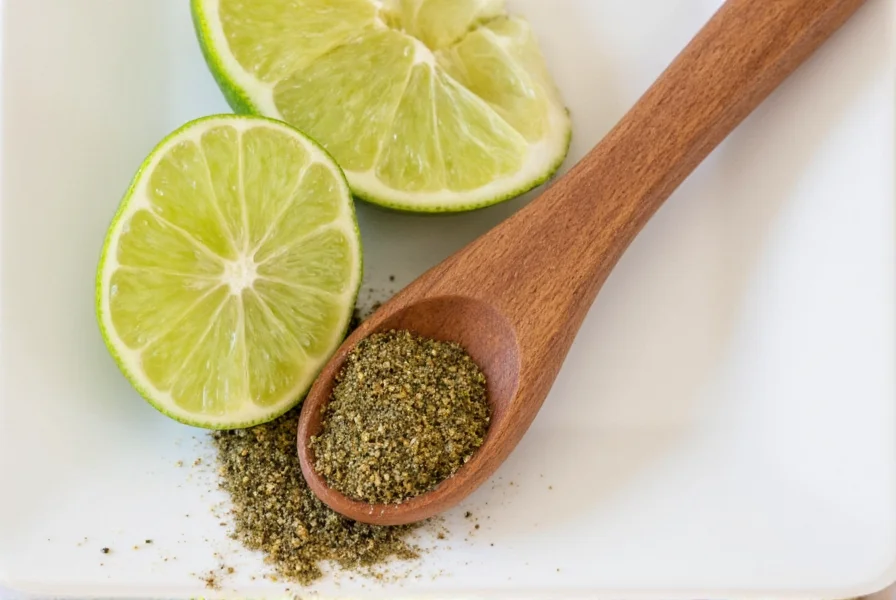Dried lime is a versatile spice used in global cuisines to add intense citrus flavor without moisture. Here's how to use it effectively in cooking: crumble into stews, grind for seasoning, brew into teas, or use as a marinade for meats. This guide covers expert techniques, buying tips, and common mistakes to maximize its unique flavor potential.
Table of Contents
- What Is Dried Lime?
- Why Choose Dried Lime?
- How to Use Dried Lime
- Buying Guide: Find the Best Dried Limes
- Common Mistakes When Using Dried Lime
- Frequently Asked Questions
- Conclusion
What Is Dried Lime?
Dried lime, also known as limu or laimi, is the sun-dried rind of specific lime varieties like Mexican or Key limes. Unlike fresh lime juice, the drying process concentrates the citrus flavor while removing moisture, creating a hard, brittle product with intense aroma and complex notes of tartness, bitterness, and earthiness. This unique characteristic makes it ideal for dishes where liquid would dilute flavors.
How to Use Dried Lime
For immediate application, follow these expert techniques:
1. Crumble for Stews and Soups
Add 1-2 whole dried limes (crushed) to 4 servings of Middle Eastern stews like Persian ghormeh sabzi or Indian chana masala. The heat releases concentrated flavor without adding liquid.
2. Grind for Seasoning Blends
Grind dried limes into powder using a spice grinder. Mix 1/4 teaspoon per serving with cumin, coriander, and chili powder for a dry rub on grilled chicken or fish. This creates a smoky-citrus crust that enhances browning.
3. Brew into Beverages
Steep 1 whole dried lime in 1 cup hot water for 5 minutes to make a tangy tea. For cocktails, muddle 1/2 dried lime in a shaker with mint and simple syrup before adding spirits.
4. Enhance Baked Goods
Use ground dried lime in small quantities (1/8 teaspoon per cup of flour) for citrusy cookies or cakes. It pairs exceptionally well with chocolate and coconut flavors.

Buying Guide: Find the Best Dried Limes
| Product Type | Key Features | Best Use Cases |
|---|---|---|
| Whole Dried Limes | Dark yellow to brown color, firm texture, strong citrus scent | Slow-cooked stews, soups, rice dishes |
| Pre-Ground Powder | Uniform fine texture, vibrant color, no visible chunks | Baking, spice rubs, sauces, salad dressings |
| Sliced Dried Limes | Thin, even slices (1-2mm), consistent color | Garnishes, tea, cocktails, salad toppings |
When purchasing, look for products with a strong citrus aroma and no signs of mold. Avoid overly dark or brittle pieces, which indicate over-drying and flavor loss. Reputable sources include Middle Eastern markets (labeled "loomi") or Persian grocery stores ("limu amani").
Common Mistakes When Using Dried Lime
- Overuse: Start with 1/4 teaspoon per serving. Dried lime is 3x more potent than fresh lime.
- Substituting for fresh lime juice: Dried lime adds flavor without liquid - never replace fresh juice in recipes requiring moisture.
- Improper storage: Keep in airtight glass containers away from light. Exposure to air reduces potency by 50% within 3 months.
- Ignoring quality: Cheap bulk products often contain fillers. Always check for strong citrus scent before use.

Frequently Asked Questions
What is dried lime exactly?
Dried lime is the sun-dried rind of specific lime varieties (typically Mexican or Key limes). The drying process removes moisture while concentrating the citrus flavor, resulting in a hard, brittle product with intense flavor that's more potent than fresh lime juice. It's also known as black lime, loomi, or limu in different cultures.
How does dried lime differ from fresh lime?
Dried lime has a more concentrated, intense citrus flavor compared to fresh lime. It offers a unique combination of tartness, bitterness, and complexity that fresh lime doesn't provide. Unlike fresh lime which adds liquid to dishes, dried lime adds flavor without moisture, making it ideal for dry rubs, spice blends, and dishes where you don't want additional liquid.
What does dried lime taste like?
Dried lime has a complex flavor profile that's citrusy but with deeper notes than fresh lime. It offers a bright acidity balanced with subtle bitterness and earthiness. When used properly, it provides a lingering citrus aroma that enhances other flavors in a dish without overwhelming them.
How long does dried lime last?
When stored properly in an airtight container away from light and moisture, dried lime can last for 1-2 years while maintaining its flavor. Whole dried limes tend to last longer than powdered versions. Always check for a strong citrus aroma before using - if it smells faint or musty, it's past its prime.
Can I make dried lime at home?
Yes, you can make dried lime at home by cutting fresh limes into quarters, sprinkling them with salt, and drying them in the sun for 3-5 days or in a dehydrator at 115°F (46°C) for 24-48 hours. Traditional Persian methods involve boiling limes first to achieve the characteristic dark color.
What dishes work best with dried lime?
Dried lime shines in Middle Eastern stews (like Persian ghormeh sabzi), Indian curries, soups, rice dishes, grilled meats, and even some desserts. It's particularly effective in slow-cooked dishes where its flavor can fully develop. It also works well in spice blends, rubs, and as a finishing touch for soups and stews.
How much dried lime should I use in recipes?
Start with 1/4 to 1/2 teaspoon of ground dried lime per serving, or one whole dried lime per 4-6 servings for stews and soups. Remember that dried lime is very potent, so it's better to start with less and add more to taste. You can always add more, but you can't remove it once added.
Where can I buy dried lime?
Dried lime is available at Middle Eastern markets, Indian grocery stores, specialty spice shops, and online retailers. Look for it in the spice section or near other dried citrus products. Middle Eastern varieties are often called "loomi" while Persian markets may label it as "limu amani."
Conclusion
Dried lime is a culinary powerhouse that transforms ordinary dishes with its intense, complex citrus flavor. By mastering proper usage techniques and avoiding common mistakes, you can elevate your cooking from basic to exceptional. Start with small quantities, experiment with different applications, and discover how this ancient spice can become your secret ingredient.











 浙公网安备
33010002000092号
浙公网安备
33010002000092号 浙B2-20120091-4
浙B2-20120091-4